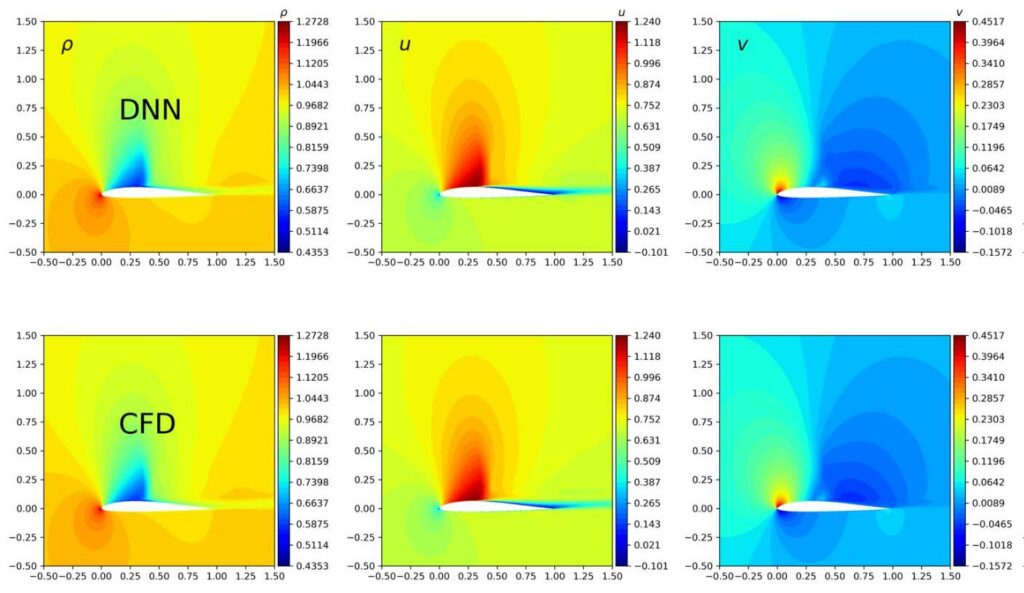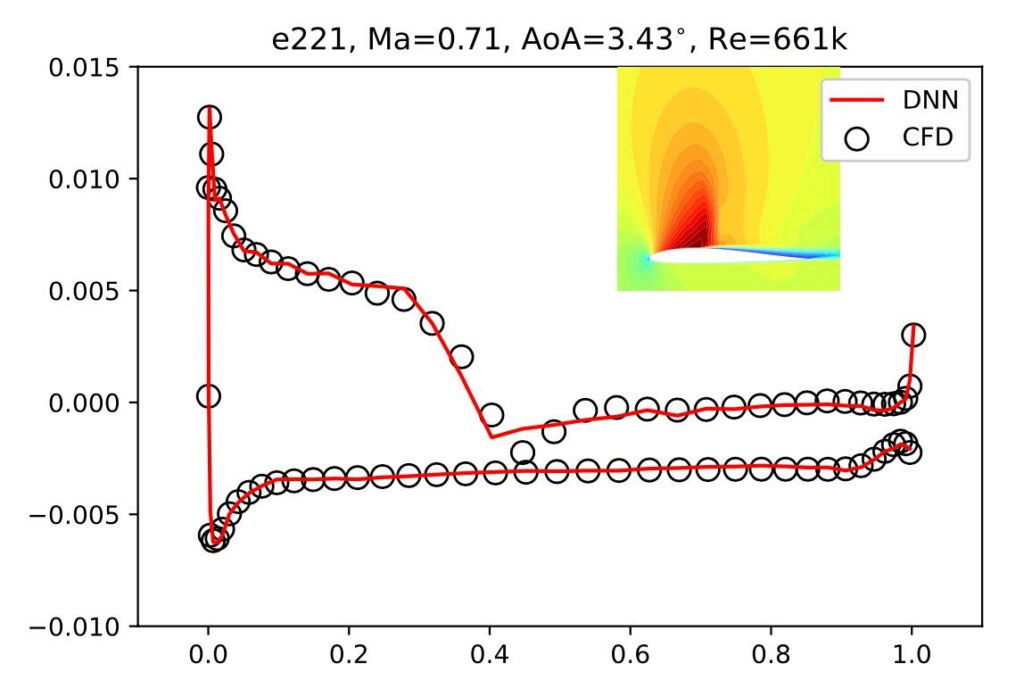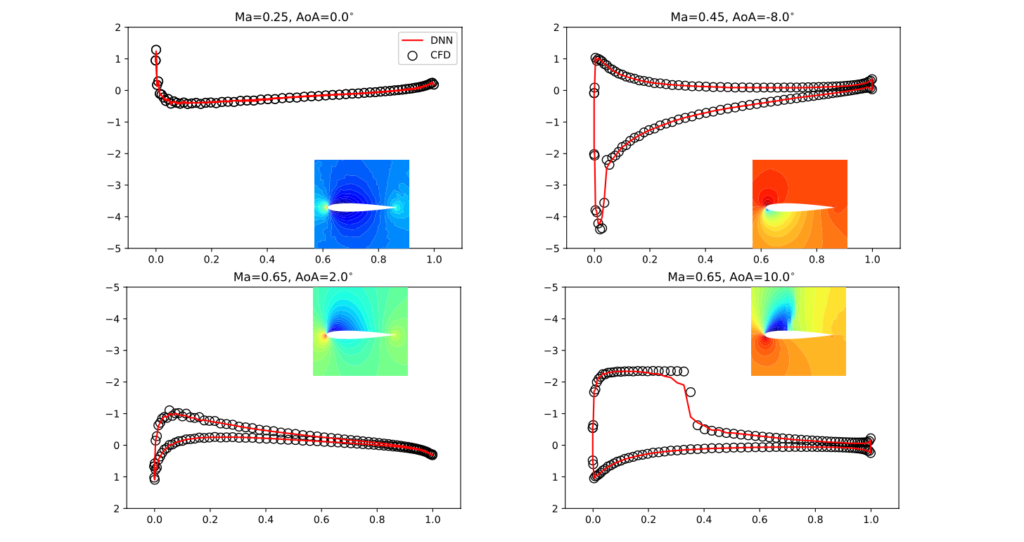Our paper on high-accuracy airfoil flow predictions (Reynolds-averaged Navier-Stokes) with deep neural networks is online now. Interestingly, turns out you don’t need things like complex graph neural networks to handle adaptive / changing meshes. The preprint is available on arXiv: https://arxiv.org/abs/2109.02183
Even the “worst case” results are very accurate, here’s an example comparison:

The trained neural network yields results that resolve all necessary structures such as shocks, and has an average error of less than 0.3% for turbulent transonic cases. This is appropriate for real-world, industrial applications. Here’s are the inferred skin friction coefficent for ‘e221’:

We also directly compare to a graph neural network (GNN) approach (one that is additionally coupled with a solver), yielding a ca. 3.6x improvement in terms of RMSE across all inferred fields. This is achieved with a much simpler and faster method…

Full Paper Abstract: The present study investigates the accurate inference of Reynolds-averaged Navier-Stokes solutions for the compressible flow over aerofoils in two dimensions with a deep neural network. Our approach yields networks that learn to generate precise flow fields for varying body-fitted, structured grids by providing them with an encoding of the corresponding mapping to a canonical space for the solutions. We apply the deep neural network model to a benchmark case of incompressible flow at randomly given angles of attack and Reynolds numbers and achieve an improvement of more than an order of magnitude compared to previous work. Further, for transonic flow cases, the deep neural network model accurately predicts complex flow behaviour at high Reynolds numbers, such as shock wave/boundary layer interaction, and quantitative distributions like pressure coefficient, skin friction coefficient as well as wake total pressure profiles downstream of aerofoils. The proposed deep learning method significantly speeds up the predictions of flow fields and shows promise for enabling fast aerodynamic designs.
